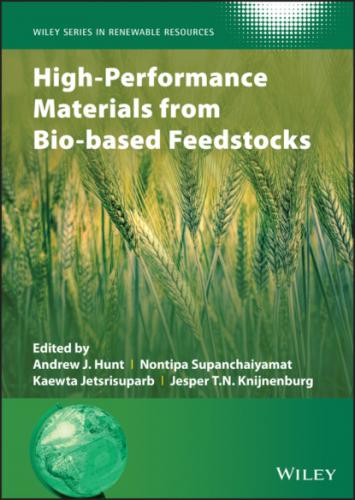Elemental analysis of the original sulphonated Starbon gave a sulphur content of 1.9% (Starbon‐400‐SO3H), 1.4% (Starbon‐650‐SO3H), and 1.3% (Starbon‐750‐SO3H) [21], whereas Aldana‐Pérez et al. reported a higher sulphur content of 3.30% by X‐ray photoelectron spectroscopy (XPS), possibly due to the much longer duration of sulphonation in their method [20].
3.2.2.2 N‐Starbons
3.2.2.2.1 Methods of N Incorporation
Attard et al. first reported a method for the N‐doping of Starbon in 2018 [12] by using chitosan (a natural N‐containing polysaccharide) or ammonia as nitrogen sources. Three methods were described. Route A involved the gelation of chitosan and alginic acid together in the formation of Starbon. Routes B and C involved injecting ammonia into the Starbon at the aerogel stage and into the final product, respectively, where ammonia was adsorbed onto the surface of the material. These N‐doped materials are collectively referred to as N‐Starbon.
Another study used the impregnation of Starbon with monoethanolamine [22]. This involved mixing Starbon derived from both corn and potato starch with a known amount of amine in a solution of ethanol and water. The product was subsequently dried at 105 °C.
3.2.2.2.2 Characterisation
In the account by Attard et al. [12], N‐doped Starbon produced by either the inclusion of chitosan or ammonia displayed similar characteristics. A significant amount of nitrile was observed in these materials, something that was known to be unusual in other forms of N‐doped carbons [12]. The TGIR results showed that chitosan released ammonia upon heating to low temperatures, whereas N‐Starbon did not. It was concluded that the amine groups in chitosan may become trapped in the form of nitriles, the presence of which was confirmed by a DRIFT absorbance band at 2210 cm−1. The nitrile was assumed chemically bonded to the Starbon as it remained present after generous washing with ethanol and water.
The presence of nitriles was further explored by preparing a range of materials and it was found that nitriles only form at carbonisation temperatures above 300 °C. It was also shown that the combination of chitosan and polysaccharide precursor to Starbon was necessary to retain the mesoporous structure of the N‐doped materials, as chitosan alone collapsed to a microporous structure on carbonisation.
Porosimetry was carried out on N‐Starbon from each synthetic route, showing that N‐doping did not negatively influence mesoporosity. Route A, using a chitosan/polysaccharide combination, resulted in larger pore volumes and surface areas than the ammonia adsorption method. A summary of BET surface area studies and pore volume is shown in Table 3.2.
A large amount of nitrogen was detected in all samples, as confirmed by elemental analysis and XPS, and displayed in Table 3.3.
In a study to produce N‐Starbon for the application of carbon capture, Sreedhar et al. found that higher carbonisation temperatures of 750 °C for a duration of six hours were required to achieve the high surface areas and pore volumes needed [22]. Different weight loadings of monoethanolamine (10, 20, and 30%) were characterised by FTIR, with amine signals being present at 1650–1550 cm−1. Further studies by X ray diffraction (XRD) confirmed that N‐Starbons from both corn and potato starch were amorphous materials with very little difference between them.
Table 3.2 Textural properties of N‐doped Starbon compared with N‐free analogues.
Source: Data from Attard et al. [12].
| Carbonisation temp. (°C) | Material | Mesoporosity (%) | Total pore volume (cm3 g−1) | BET surface area (m2 g−1) |
|---|---|---|---|---|
| 300 | Starbon N‐Starbon‐A N‐Starbon‐B | 88.3 86.7 98.7 | 0.627 0.663 0.645 | 174.2 412.6 240.5 |
| 450 | Starbon N‐Starbon‐A | 84.5 81.9 | 0.515 0.615 | 339.5 448.3 |
| 600 | Starbon N‐Starbon‐A N‐Starbon‐C | 79.8 83.5 92.8 | 0.686 0.750 0.324 | 519.5 519.2 249.5 |
Table 3.3 Nitrogen content of N‐doped Starbons.
Source: Data from Attard et al. [12].
| Carbonisation temp. (°C) | Nitrogen content (wt%) | C/N ratio | ||
|---|---|---|---|---|
| CHN | XPS | CHN | XPS | |
| 300‐A | 6.4 | 4.9 | 9.2 | 15.3 |
| 300‐B | 6.8 | 6.1 | 8.8 | 12.4 |
| 450‐A | 10.6 | 11.6 | 5.7 | 5.8 |
| 600‐A | 6.5 | 7.0 | 11.1 | 11.3 |
| 600‐C | 12.4 | 12.9 | 5.8 | 5.9 |
3.2.2.3 Derivatisation via Bromination and Activation of Hydroxyl Functionality
According to the functionality of the Starbon materials, particularly (but not exclusively) the lower temperature materials should have a significant number of –OH functionalities as well as several alkene and similar sites. Such materials clearly have the potential for functionalisation too, although less work has been published in utilising these functional groups as anchor points for groups (e.g. epoxides which could be further elaborated). Sreedhar’s approach is likely to bind the amines to the surface via aldehydes and other active groups on the surface, reactions that should be readily achieved under mild conditions [22]. Two other articles indicate
